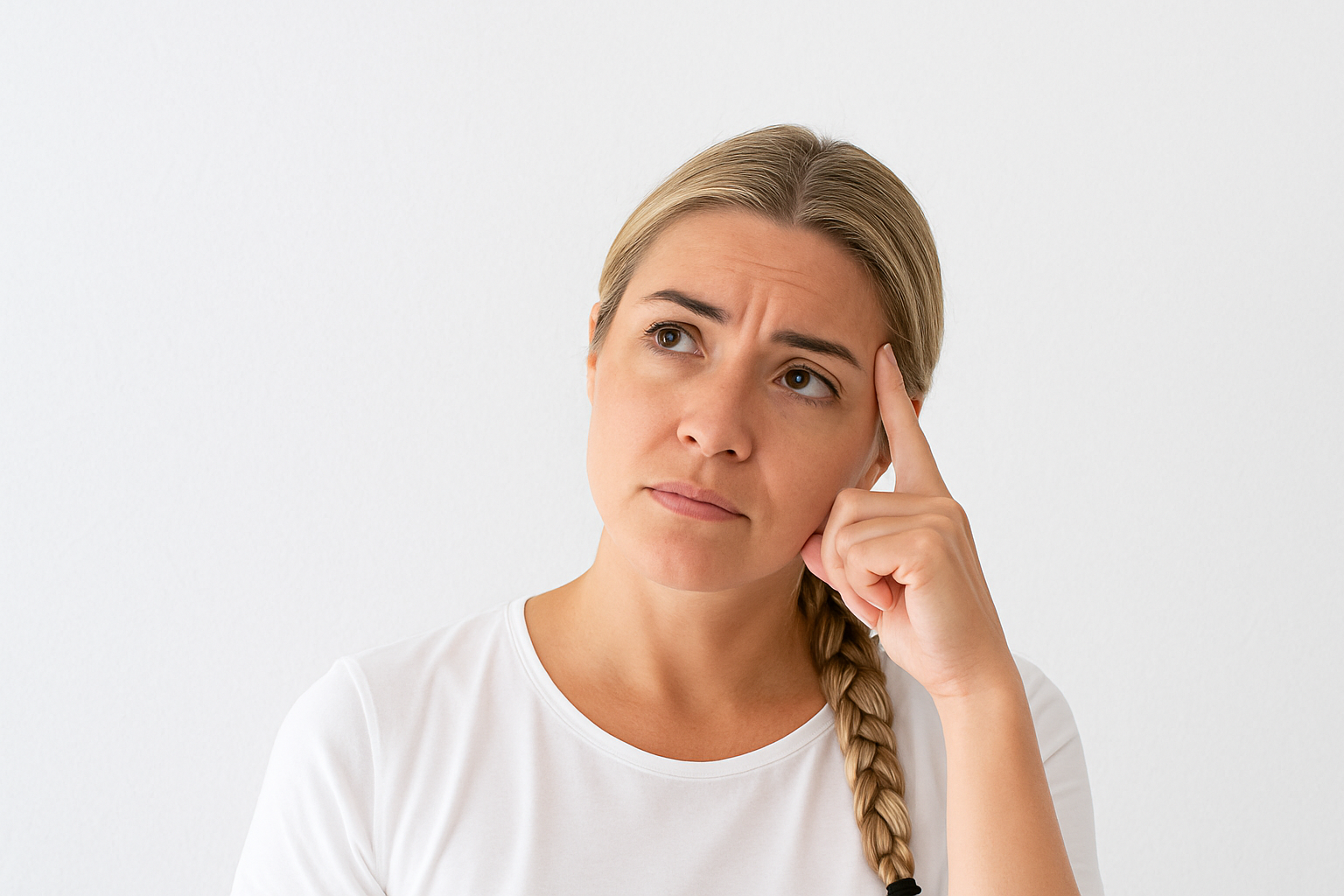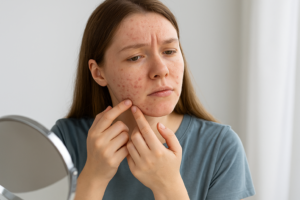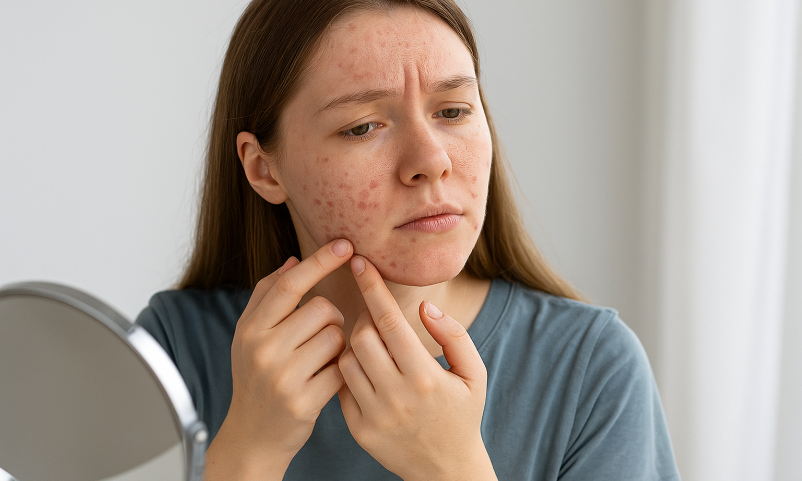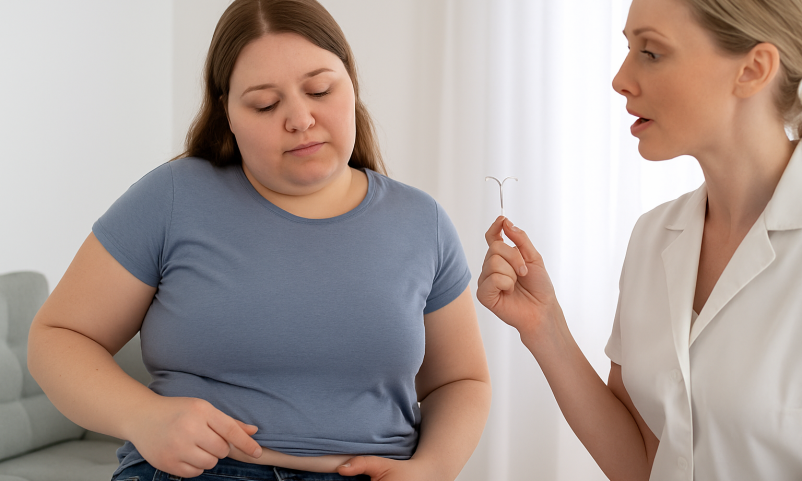Intrauterine devices (IUDs) is a small, flexible, T-shaped device that are commonly known as long-term birth control options, but their benefits go beyond just contraception. For many individuals in Singapore, IUDs — especially hormonal types — are also used to help manage heavy menstrual bleeding and regulate irregular menstrual cycles. By delivering targeted effects within the uterus, some IUDs can significantly reduce menstrual bleeding and alleviate symptoms associated with certain gynaecological conditions.
If you’ve been exploring ways to manage challenging periods or considering non-daily solutions for contraception, you may be wondering whether an IUD for heavy periods could be right for you. This article covers how IUDs work for menstrual regulation, the types of conditions they may help with, potential changes in your menstrual flow, who might benefit most, and the available alternatives.
 While hormonal IUDs offer effective relief for heavy menstrual bleeding, they may not be suitable for everyone. Understanding who stands to benefit the most — and who may need to consider other options — is an important part of informed decision-making.
While hormonal IUDs offer effective relief for heavy menstrual bleeding, they may not be suitable for everyone. Understanding who stands to benefit the most — and who may need to consider other options — is an important part of informed decision-making.

 Once a hormonal IUD is inserted, your body will gradually adjust to the presence of the device and the localised hormone release. Knowing the typical timeline of changes can help set realistic expectations and guide you on when to follow up with your doctor.
Once a hormonal IUD is inserted, your body will gradually adjust to the presence of the device and the localised hormone release. Knowing the typical timeline of changes can help set realistic expectations and guide you on when to follow up with your doctor.
How IUDs Help with Heavy or Irregular Periods
In addition to preventing pregnancy, hormonal IUDs are increasingly recognised for their ability to regulate menstrual cycles and reduce heavy bleeding. This section explains the medical conditions often associated with heavy periods, how hormonal IUDs work within the uterus, and what menstrual changes you can expect once the device is in place.Common Conditions Treated
IUDs, particularly the hormonal type, are sometimes recommended by healthcare professionals as part of a treatment plan for the following conditions:- Menorrhagia (Heavy Periods): This makes hormonal IUDs one of the most effective non-surgical options for treating heavy menstrual bleeding in both adolescents and adults.
- Dysmenorrhea (Painful Periods): For individuals experiencing cramping and pain, hormonal IUDs may ease discomfort by thinning the uterine lining and stabilising hormone levels.
- Anaemia: Heavy bleeding can cause or worsen iron-deficiency anaemia. By reducing menstrual blood flow, hormonal IUDs may support recovery from or prevention of this condition.
- Endometriosis: While not a cure, hormonal IUDs can help manage symptoms such as pelvic pain and bleeding by suppressing endometrial activity.
- Adenomyosis: This condition, where the endometrial tissue grows into the uterine wall, often leads to painful and heavy periods. Hormonal IUDs may reduce symptoms by decreasing uterine inflammation and thickness of the endometrial lining.
- Hormonal Imbalance: For some, irregular or prolonged menstruation stems from hormonal disruptions. The levonorgestrel released by certain IUDs can help stabilise the hormonal environment within the uterus, making them a viable treatment option for conditions like abnormal uterine bleeding.
Mechanism of Action
Hormonal IUDs
These hormonal devices slowly release the hormone progestin, specifically levonorgestrel, a type of progestin, directly into the uterus. This localised hormone delivery helps:- Thin the endometrial lining
- Suppress monthly endometrial growth
- Reduce menstrual blood flow over time
Copper IUDs
Unlike hormonal IUDs, copper versions do not regulate menstrual bleeding. In fact, they may initially increase menstrual flow and cramping, making them less suitable for individuals seeking relief from heavy periods.Expected Menstrual Changes
If you opt for an IUD, you may notice the following changes to your menstrual cycle:- Reduced flow over time: Some users experience up to a 90% decrease in menstrual bleeding after 6 months of use.
- Shorter duration of menstruation: Periods often become lighter and shorter.
- Amenorrhoea (absence of periods): A small percentage of users may stop menstruating altogether — this is a known and generally safe effect of hormonal IUDs.
- Irregular spotting: In the first few months after insertion, it’s common to have unscheduled spotting or light bleeding.
Benefits of IUDs for Menstrual Regulation
While hormonal IUDs are often chosen for birth control, they offer additional health and lifestyle benefits when used for menstrual regulation. These advantages can significantly improve comfort, health outcomes, and daily functioning, particularly for those struggling with heavy or irregular periods.Specific Benefits
The benefits of hormonal IUDs extend beyond reducing menstrual bleeding. These devices offer unique features that make this form of long-acting contraception an appealing choice for long-term menstrual management:- Long-lasting effect: Once inserted, a hormonal IUD can remain effective for 3 to 7 years, depending on the type, offering convenience and stability.
- Localised hormone delivery: Unlike oral contraceptives, hormonal IUDs release levonorgestrel directly into the uterus, minimising systemic side effects such as nausea or mood fluctuations.
- Reduced risk of endometrial hyperplasia: By thinning the endometrial lining, hormonal IUDs may lower the risk of excessive endometrial growth, associated with prolonged or irregular bleeding due to hormone imbalance.
- Reversible at any time: If you decide to remove the IUD, whether due to side effects, lifestyle changes, or plans for pregnancy, the process is quick and fertility typically returns promptly.
Quality of Life Improvements
For many individuals, heavy or unpredictable periods interfere with work, school, and social life. Hormonal IUDs can help restore balance and confidence in daily routines:- Less frequent or lighter periods: You may no longer need to plan your activities around heavy bleeding days.
- Relief from anaemia: By reducing blood loss, IUDs may help improve iron levels and lessen symptoms like fatigue or dizziness associated with period-related anaemia.
- Improved participation in daily activities: With more predictable and manageable cycles, individuals often report fewer disruptions and a better overall sense of well-being.
Who Might Consider an IUD for Heavy Periods?
 While hormonal IUDs offer effective relief for heavy menstrual bleeding, they may not be suitable for everyone. Understanding who stands to benefit the most — and who may need to consider other options — is an important part of informed decision-making.
While hormonal IUDs offer effective relief for heavy menstrual bleeding, they may not be suitable for everyone. Understanding who stands to benefit the most — and who may need to consider other options — is an important part of informed decision-making.
Suitable Candidates
Your healthcare provider may recommend a hormonal IUD if you fall into any of the following categories:- Individuals with diagnosed menorrhagia or anaemia: If heavy periods have led to low iron levels or fatigue, a hormonal IUD can help reduce bleeding and support recovery.
- Those who cannot take oestrogen: For people who are unable to use oestrogen-containing contraceptives due to health risks (e.g. migraine with aura, clotting disorders), a progestin-only IUD is often a safer alternative.
- Women in perimenopause: As hormone levels begin to fluctuate, heavier or irregular periods are common. A hormonal IUD can offer both contraception and menstrual control during this transitional stage.
- Teens or young adults with menstrual regulation needs: After thorough consultation, a hormonal IUD may be appropriate for younger individuals seeking a long-term solution for heavy bleeding, especially if oral medications are ineffective or poorly tolerated.
When It Might Not Be Suitable
Despite its benefits, an IUD may not be recommended in certain situations. A thorough medical evaluation is essential to ensure safety and suitability. Potential contraindications include:- Current pelvic infection: Active pelvic inflammatory disease (PID) or untreated sexually transmitted infections (STIs) increase the risk of complications with insertion.
- Uterine abnormalities: Structural issues such as fibroids that distort the uterine cavity may interfere with proper IUD placement.
- Known hormone sensitivity: If you’ve previously experienced severe side effects from progestin-containing treatments, your provider may advise against hormonal IUDs.
- Unexplained vaginal bleeding: Before inserting an IUD, your doctor may need to investigate irregular bleeding to rule out serious underlying conditions.
Insertion and Removal Process
Understanding what happens before, during, and after IUD insertion can help reduce anxiety and prepare you for a smoother experience. While the procedure is relatively quick, knowing what to expect — and when to seek follow-up — is key to ensuring comfort and long-term success.
How IUD Insertion Works
Insertion typically takes 5 to 15 minutes in a clinic setting. A speculum is used to visualise the cervix, and a thin, flexible applicator places the IUD into the uterus. Many providers recommend inserting the IUD during your period, as the cervix is slightly more open and it’s easier to confirm you’re not pregnant. Some individuals report cramping or sharp pain during insertion. While it’s generally tolerable, it can vary depending on your pain threshold and uterine sensitivity Over-the-counter pain relief is often suggested beforehand. Discussing pain control options with your doctor is advisable if you’re concerned.After Insertion
It’s common to experience spotting, irregular bleeding, or cramping during the first 3 to 6 months after insertion, especially with hormonal IUDs. Your provider may schedule a check-up around 6 weeks post-insertion to ensure the IUD remains correctly positioned. If you experience severe pain, fever, abnormal discharge, or suspect expulsion, consult your doctor promptly.IUD Removal
Removal of IUD is typically a short outpatient procedure, often less painful than insertion. Your provider will gently pull on the IUD’s strings using forceps. You may choose to remove the IUD if you experience bothersome side effects, decide to switch to another contraceptive method, or begin planning for pregnancy.Side Effects and Risks
While hormonal IUDs are generally well-tolerated and safe for most users, it’s important to be aware of potential side effects and rare but serious risks. Understanding these outcomes in advance allows you to make an informed decision in consultation with your healthcare provider.Common Side Effects
- Irregular spotting or bleeding
- Cramping
- Breast tenderness
- Mood changes
- Acne, bloating, or minor weight gain
Rare But Serious Risks
- Uterine perforation
In rare cases (fewer than 1 in 1,000), the IUD may puncture the uterine wall during insertion. This often requires removal and may need further medical care. - IUD expulsion
The IUD may be partially or fully expelled from the uterus, particularly within the first year of use. If this happens, the device becomes ineffective and must be replaced. - Pelvic inflammatory disease (PID)
There’s a small risk of PID in the first 20 days after insertion, especially if an undiagnosed STI is present. This is why a thorough sexual health screening is typically done before IUD placement.
Alternatives to IUDs for Managing Heavy Periods
While hormonal IUDs are an effective option for many, they aren’t suitable or preferred by everyone. Fortunately, there are several alternatives — both hormonal and non-hormonal — that can help reduce heavy menstrual bleeding. The right choice depends on your health profile, lifestyle preferences, and treatment goals.| Treatment Option | Hormonal? | Duration | Reversible | Typical Use Case |
|---|---|---|---|---|
| Hormonal IUD | Yes | 3–7 years | Yes | Long-term bleeding control |
| Copper IUD | No | 10–12 years | Yes | Not for heavy bleeding |
| Birth Control Pills | Yes | Ongoing | Yes | Monthly regulation |
| Hormonal Injection | Yes | 3 months | Yes | Short-term hormone-based solution |
| Tranexamic Acid | No | Per cycle | Yes | Intermittent non-hormonal relief |
Hormonal Options
These methods work by adjusting hormone levels to reduce menstrual flow or prevent ovulation altogether:- Oral contraceptive pills: Taken daily, these help regulate your cycle and reduce menstrual blood loss.
- Vaginal ring: A flexible ring inserted into the vagina monthly, releasing both oestrogen and progestin to control bleeding.
- Hormonal injections (e.g. depot medroxyprogesterone acetate): Administered every three months, these can suppress ovulation and lead to lighter or absent periods over time.
- Hormonal implant: A small rod inserted under the skin of the upper arm that releases progestin continuously, often resulting in reduced or absent periods.
Non-Hormonal Options
If hormonal treatment isn’t appropriate for you, other forms of non-hormonal therapies may still provide relief:- NSAIDs (e.g. ibuprofen): Non-steroidal anti-inflammatory drugs can reduce menstrual cramps and blood loss when taken at the start of your period.
- Tranexamic acid: An oral medication that helps the blood clot more effectively, often prescribed to reduce menstrual bleeding on heavy days.
- Endometrial ablation: A minimally invasive surgical procedure that destroys the uterine lining to reduce or stop bleeding. Not suitable for those planning future pregnancies.
- Hysterectomy: A permanent contraception (surgical option) where the uterus is removed. Considered only in severe cases where other treatments have failed and childbearing is complete.
What to Expect After Starting an IUD
 Once a hormonal IUD is inserted, your body will gradually adjust to the presence of the device and the localised hormone release. Knowing the typical timeline of changes can help set realistic expectations and guide you on when to follow up with your doctor.
Once a hormonal IUD is inserted, your body will gradually adjust to the presence of the device and the localised hormone release. Knowing the typical timeline of changes can help set realistic expectations and guide you on when to follow up with your doctor.
Timeline of Changes
First 3 months: It’s common to experience spotting, irregular bleeding, or mild cramping as your body adapts. Some individuals also notice temporary hormonal side effects such as mood fluctuations or breast tenderness. 3 to 6 months: Most users will begin to see noticeable reductions in menstrual flow, with lighter and shorter periods. Spotting tends to decrease or stop altogether during this time. After 1 year: Most women achieve a stabilised menstrual cycle, while others may experience amenorrhoea (absence of periods). This is a known and generally safe effect of long-term levonorgestrel exposure.Fertility After Removal
One of the advantages of hormonal IUDs is that they are fully reversible. Once the IUD is removed:- Fertility typically returns quickly, often within a few weeks.
- There is no long-term impact on your ability to conceive unless underlying fertility issues existed before using the IUD.








